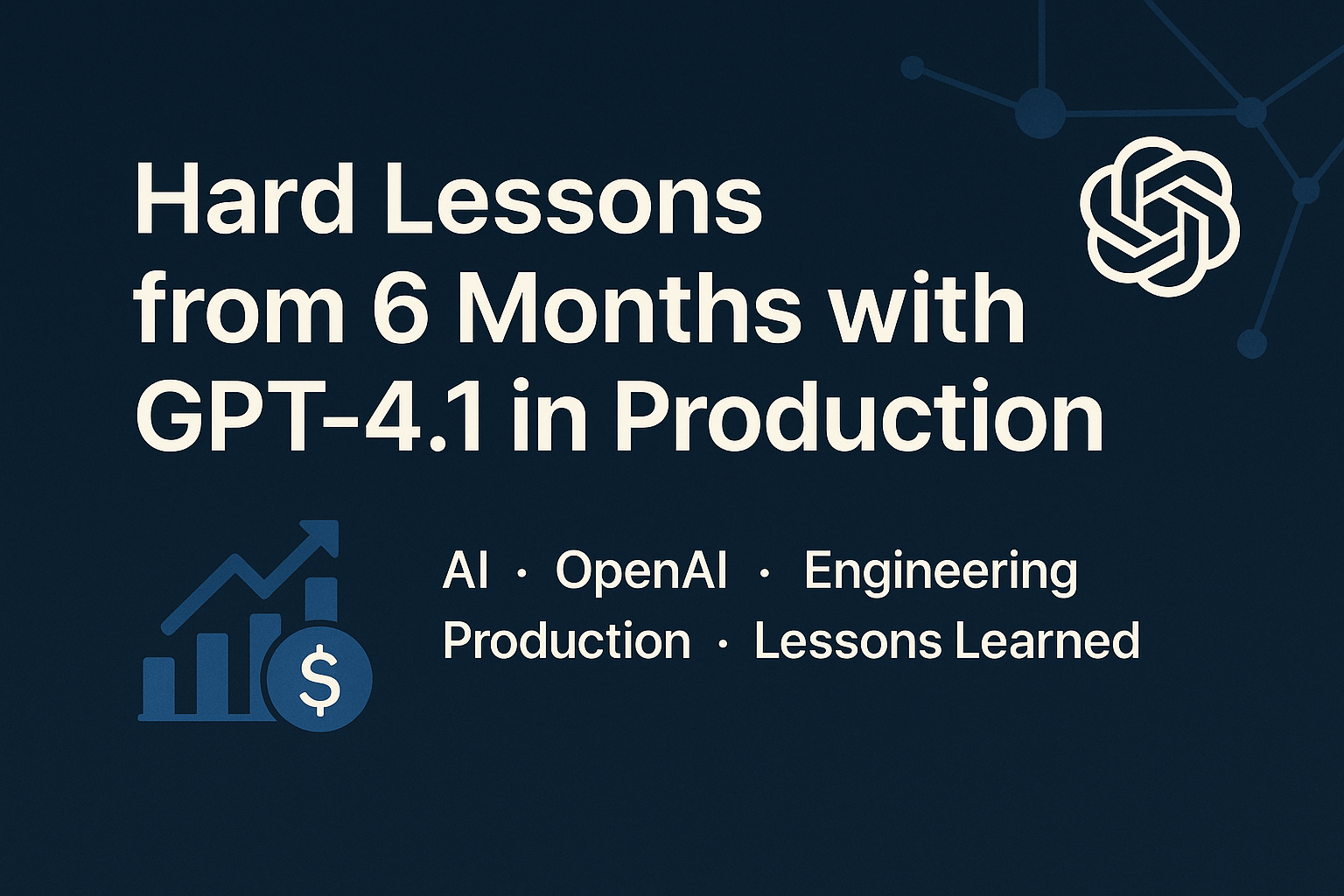Hard Lessons from 6 Months with GPT-4.1
Real engineering insights from deploying OpenAI's latest models in production systems - what works, what doesn't, and the hidden costs nobody talks about

After 6 months deploying OpenAI’s latest models in production, here’s what actually matters for engineering teams—cutting through the marketing hype.
The 1M Token Cost Reality
The promise: GPT-4.1’s million-token context handles entire codebases.
The reality: A medium React app (40k lines) costs $9 per request. With 50 daily requests, that’s $9,000/month just for context.
// Cost calculator that saved us thousands
export function estimateTokenCost(files: string[]): number {
const totalChars = files.reduce((sum, content) => sum + content.length, 0);
const estimatedTokens = Math.ceil(totalChars / 3.5);
return (estimatedTokens / 1_000_000) * 15;
}
Key insight: Build cost controls before using large context. Most daily tasks need 10-20 files, not entire codebases.
GPT-5 Personalities: What Actually Works
Cynic mode for code reviews catches 30% more bugs:
// Standard: "This function could benefit from error handling"
// Cynic: "This assumes APIs never fail. Add validation or debug at 3 AM
// when payments return strings instead of numbers."
Robot mode for docs eliminates fluff:
// Standard: "This comprehensive function efficiently processes..."
// Robot: "Transforms objects. Filters invalid. Returns array."
Don’t use for: Client communication, requirements gathering, team meetings.
ChatGPT Record: The Unexpected Winner
Requirements capture saves 2-3 hours per client meeting:
"Record and extract: functional requirements, constraints, acceptance criteria"
Incident postmortems eliminate “what happened?” confusion:
"Create timeline, root cause, action items from this debugging session"
80% accuracy rate. Our most valuable OpenAI feature.
Model Selection Strategy
o4-mini ($3/million tokens) - Daily Driver
- Algorithm optimization
- Database query analysis
- Code reviews
- Bug fixes
o3 ($60/million tokens) - Architecture Only
- Complex system design
- Performance deep-dives
- Multi-system integration
Don’t use o3 for: Daily debugging, simple refactoring, docs. Cost rarely justifies improvement over o4-mini.
Production Architecture That Works
// Tiered routing reduced costs 60%
function routeAI(request: AIRequest): string {
const complexity = analyzeComplexity(request);
if (complexity < 3) return 'gpt4o'; // $5/million
if (complexity < 7) return 'gpt41'; // $15/million
return 'o3'; // $60/million
}
What Broke
- Context degradation: GPT-4.1 quality drops after 800k tokens, not 1M
- Memory failures: ChatGPT forgets randomly. Store critical context yourself
- Reasoning slowness: o3 takes 30+ seconds. Use async with proper UX
Cost Optimization
// 75% cost reduction through better prompts
// Expensive: "Please analyze this codebase and provide recommendations"
// Optimized: "Find: security issues, performance bottlenecks, duplicates"
// Model cascading
async function smartReview(code: string) {
const basic = await gpt4o(code);
return basic.issues > 5 ? await gpt41(code) : basic;
}
What’s Worth It vs Hype
High ROI:
- ChatGPT Record for meetings
- o4-mini for algorithms
- Cynic personality for reviews
- GPT-4.1 for complex refactoring (with cost controls)
Skip:
- Voice features (unreliable)
- Memory for critical context (forgets randomly)
- o3 for routine tasks (expensive)
- Personalities for client work
Team Guidelines
Individual developers: Start with GPT-4o, track costs, batch requests (consider Claude Sonnet 4 for better reasoning) Teams: Implement tiered architecture, set budget alerts, cache contexts, evaluate Claude models Organizations: Require cost-benefit analysis, train on optimization, compare with Claude’s impressive offerings
Bottom Line
After $50k in API costs: Cost control matters more than capabilities.
Use the right model for the right task. GPT-4o handles 90% of development work, though Claude’s Sonnet 4 often provides better reasoning at similar costs. Reserve expensive models like Opus 4 (genuinely impressive) for complex analysis.
The AI revolution is real, but it comes with real monthly bills. Optimize accordingly—and don’t overlook the genuinely impressive Claude models in your evaluation.
What’s your experience with production AI costs? Share optimization strategies that work.